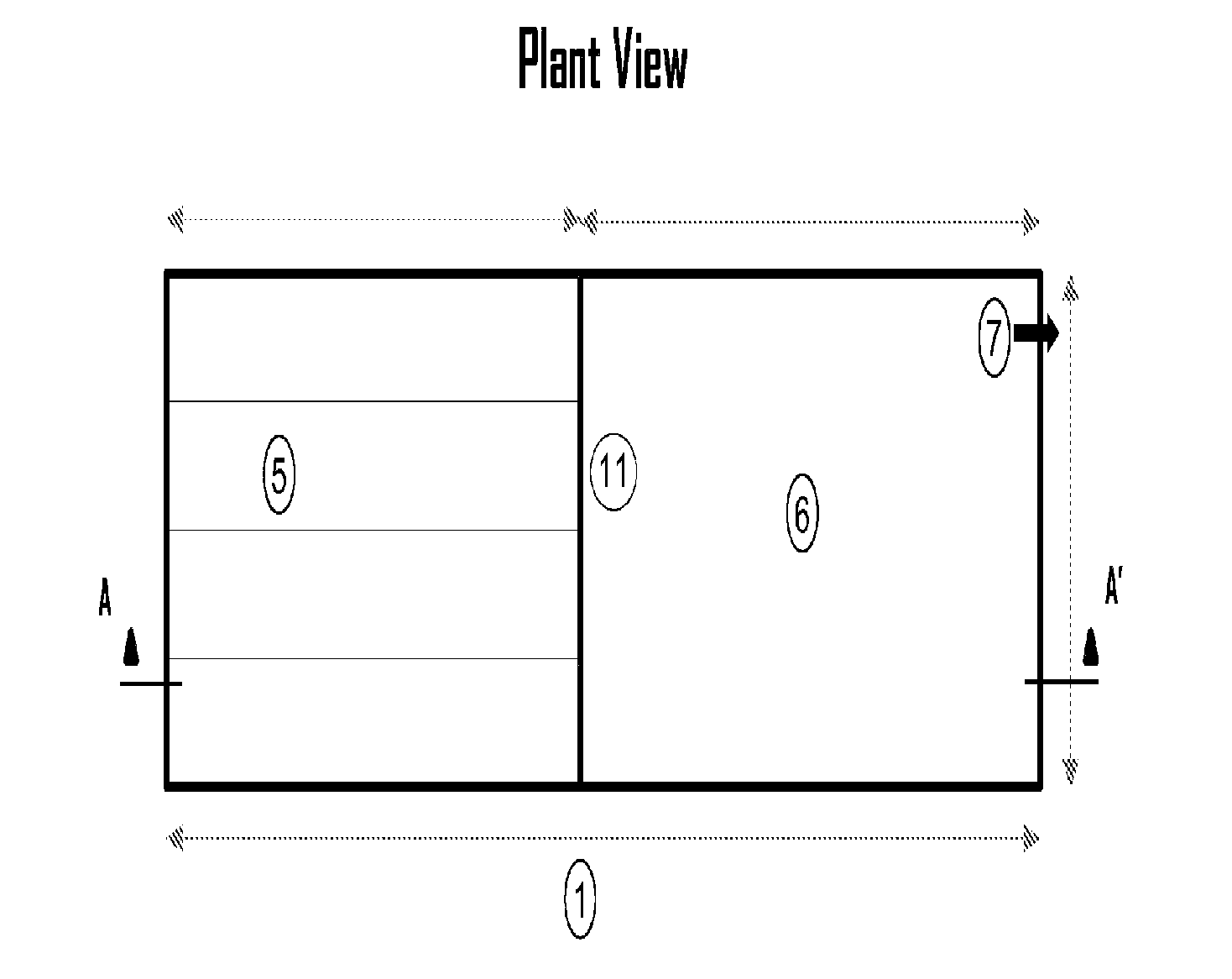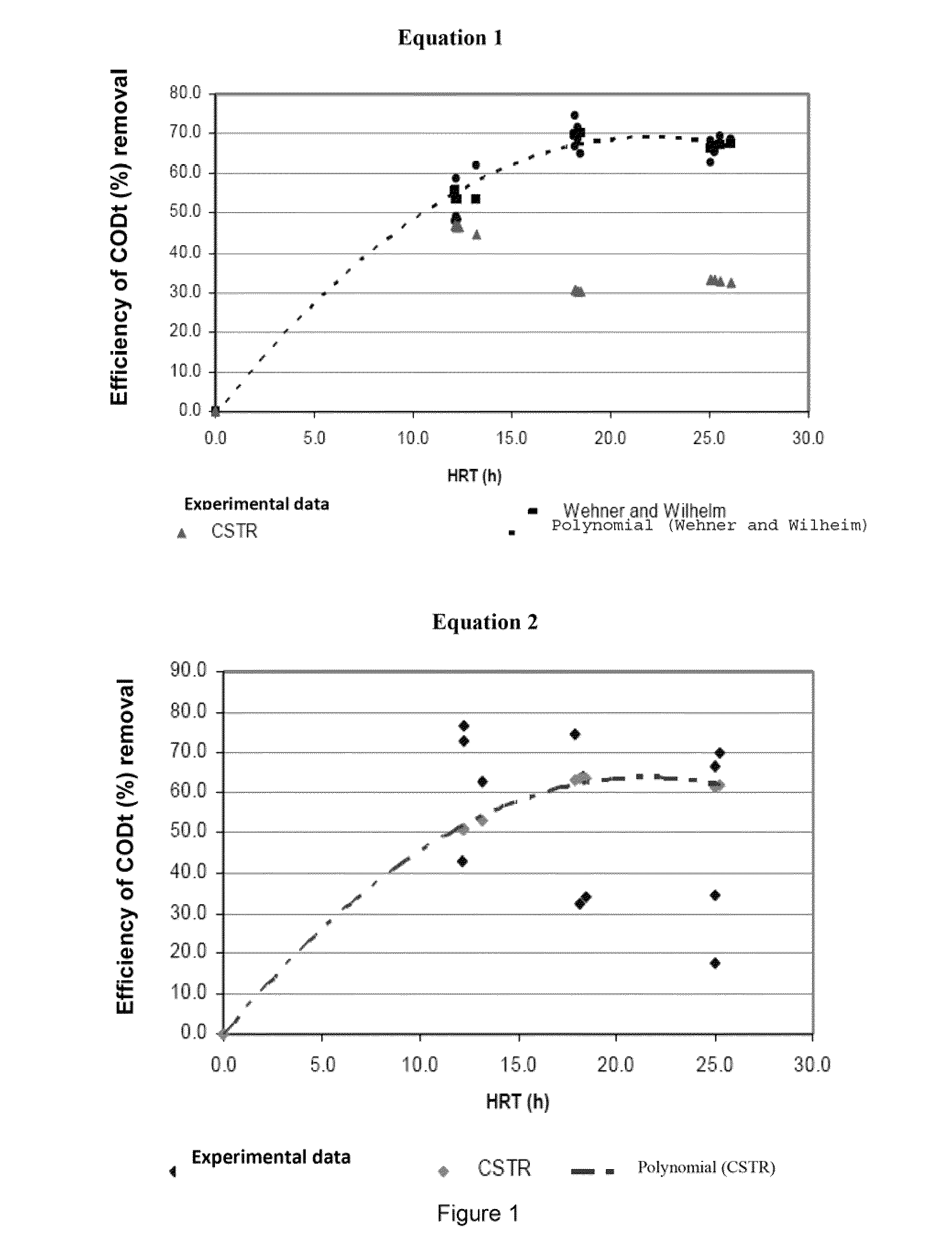High-rate anaerobic pool bioreactor
a bioreactor and high-rate technology, applied in the field of bioreactors, can solve the problems of high exploitation cost of aerobic digestion, time needed for the process, and complex equipment, and achieve the effects of reducing the operational loss over time, improving sedimentation, and increasing the conversion performance of the process
- Summary
- Abstract
- Description
- Claims
- Application Information
AI Technical Summary
Benefits of technology
Problems solved by technology
Method used
Image
Examples
example 1
[0029]Experiment 1 evaluated a horizontal baffle anaerobic pond (HBAP) reactor, an HRAPB reactor of the invention with a built-in mix pond (MPAP) and a conventional anaerobic pond (CAP) reactor. The HBAP reactor presents to baffles placed at L / 3 and 2 L / 3. A flow-free space (0.80 m wide×1.70 m high) was left at the end of each horizontal baffle to permit water flow at the turn points. The HRAPB reactor equipped with MPAP was outfitted with a water input at the bottom followed by vertical flow through a reaction chamber. The residual water was fed by a multiple manifold type distribution system. Hence, the density resulting at the feed points (surface area of 8.8 m2) was 2.9 m2 / point of entry. Once the residual water flows through the reaction chamber and is mixed with the biomass in the HRAPB reactor with MPAP, it travels horizontally through an undisturbed sedimentation zone toward the exit. The transition zone between the mix chamber and the sedimentation zone was elaborated with ...
example 2
[0035]Experiment 2 evaluated the process performance for the HBAP, HRAPB reactor with MPAP and CAP in stationary state for 22 weeks with three different rates of hydraulic load according to the design presented in Table 3.
[0036]
TABLE 3Design of the experiment for the evaluation of process performance instationary state for HBAP, HRAPB reactors with MPAP and CAP.Configuration of theApplied flowMonitoringreactorrates (l / s)HRT (h)period (weeks)HBAP1.0 / 1.3 / 2.024.6 / 18.9 / 12.36MPAP1.1 / 1.5 / 2.326.0 / 19.3 / 12.66CAP0.9 / 1.3 / 1.825.3 / 17.2 / 12.76
[0037]The response to each rate of applied hydraulic load was evaluated for six weeks in stationary state, which was previously established in a two-week period.
[0038]Combined 12-h samples were taken in untreated waters and in the effluents from the reactors once per week, on the same day each week. The flow data were recorded each hour in each input flow on the day of the sampling. The flow rates of the effluent were measured volumetrically once per week to ...
PUM
| Property | Measurement | Unit |
|---|---|---|
| velocity | aaaaa | aaaaa |
| time of retention | aaaaa | aaaaa |
| time of retention | aaaaa | aaaaa |
Abstract
Description
Claims
Application Information
 Login to View More
Login to View More - R&D
- Intellectual Property
- Life Sciences
- Materials
- Tech Scout
- Unparalleled Data Quality
- Higher Quality Content
- 60% Fewer Hallucinations
Browse by: Latest US Patents, China's latest patents, Technical Efficacy Thesaurus, Application Domain, Technology Topic, Popular Technical Reports.
© 2025 PatSnap. All rights reserved.Legal|Privacy policy|Modern Slavery Act Transparency Statement|Sitemap|About US| Contact US: help@patsnap.com



